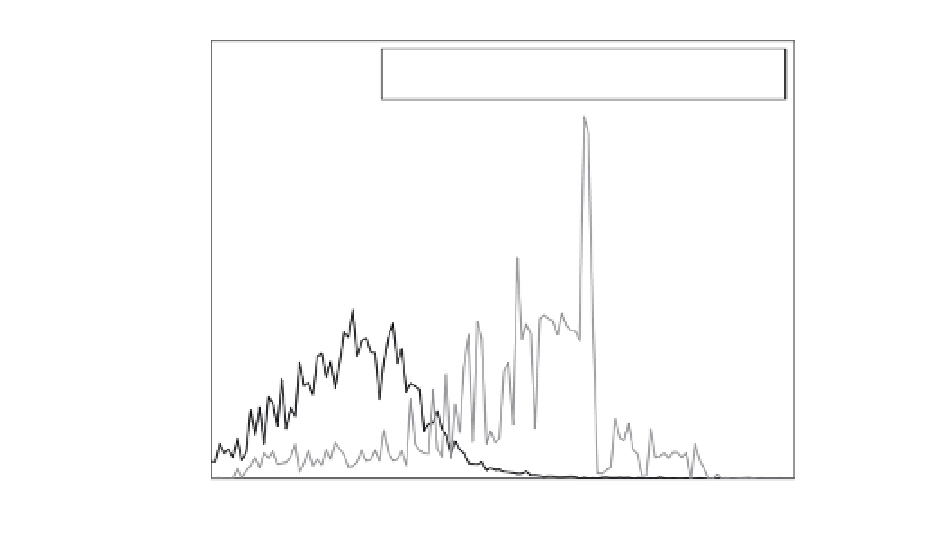Geoscience Reference
In-Depth Information
Background clutter
Background clutter + wind turbine clutter
0.05
0.045
0.04
0.035
0.03
0.025
0.02
0.015
0.01
0.005
0
10
−3
10
−2
10
−1
10
0
Rain rate [mm/h]
Fig. 4. Distributions of clutter before and after the construction of wind turbines. Solid,
vertical lines indicate the median value and dashed, vertical lines show the first and third
quartiles.
elevation angle was strong enough to indicate the presence of precipitation the corresponding
value from the lowest elevation angle was filtered out.
Approximately 13 km from the weather radar in Karlskrona, Sweden, three wind turbines are
located in the same radar cell (i.e., the same range bin and azimuth gate). Weather-filtered
clutter distributions from this radar cell before and after the construction of the three
wind turbines are shown in Fig. 4. It is seen that the two clutter distributions are easily
distinguishable, having similar shapes but very different medians. It is evident that in this
radar cell the existence of operational wind turbines has substantially increased the total
amount of clutter.
Before the construction of the wind turbines, the reflectivity values remaining after filtering
out precipitation echoes were composed of clear-air returns and other, non-identified, moving
targets. In a second step of the analysis, this background clutter was removed from the
weather-filtered reflectivity values recorded after the construction of the wind turbines. In
this way a measure of clutter solely due to wind turbines was obtained.
The median wind turbine clutter was obtained from the difference between clutter after and
before the construction of wind turbines. This analysis was carried out for all wind turbines
in line-of-sight of a Swedish weather radar. The median wind turbine clutter values of 11
different radar cells, together with the first and third quartiles, are shown in Fig. 5. The median
wind turbine clutter is seen to vary from close to zero to more than 0.02 mm h
−
1
.Thespread
of the clutter is attributed to the fact that the strength of a wind turbine echo depends on the
position of the rotor blades and the yaw of the wind turbine, which in turn depends on the
direction of the wind.










































































































